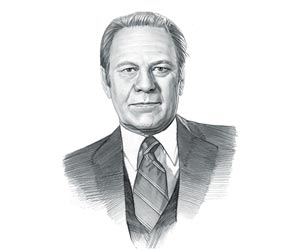|
|
|
|
|
The Privacy Act of 1974 established a a Privacy Protection Study Commission and granted access to records maintained by Federal agencies. National security exemptions to the Privacy Act of 1974 apply to records maintained by the Police, Secret Service and Central Intelligence Agency (CIA). The 1988 Computer Matching and Privacy Protection Actamended the Privacy Act of 1974.
Provisions of the Privacy Act of 1974:
Facts for kids
Facts about
Privacy Act of 1974 In 1974 there was no internet, no cell phones or smart phones but people had begun to have concerns about the information held on individual by government agencies. Federal agency data banks were collecting personally identifiable information about individuals. Biometrics, the collection and use of unique physiological characteristics to identify an individual, such as finger prints, voice recognition and photographs were also giving concern especially if they were used without an individual's knowledge or consent. The 1960's and 1970's also saw the increased use of computers and advances in computer technology, enabling the government to accumulate and store personal information. Data practices were largely unregulated and their implications regarding privacy were causing suspicion and concern amongst many Americans. Between 1965 and 1974 various congressional committees issued reports on how individual privacy rights were affected by the growth of data banks and the emergence of electronic data collection and storage. In 1974 over 850 federal agency “data banks” had been established. In 1972 the Code of Fair Information Practices was developed by HEW, the Health, Education, Welfare Advisory Committee on Automated Data Systems. The proposals in the HEW report related to the Automated Personal Data Systems, Records, computers, and the Rights of Citizens and was an important catalyst for the legislation known as the Privacy Act of 1974. The 1973 Code of Fair Information Practices was based on five principles:
The Privacy Act of 1974 was one of many laws adopted in the wake of the Watergate Scandal that responded to public concerns about potential government misuse of private information and to demands for increased government accountability to the public. Congress incorporated the principles of the Code of Fair Information Practices into the Privacy Act of 1974 and responded to the public concerns following Watergate. The new law applied to Federal executive branch agencies, including the Executive Office of the President Amendments to the Freedom of Information Act (FOIA) to clarify and protect the right of the public to information and regulate government control of documents, were enacted the same year as the Privacy Act of 1974. The Computer Matching and Privacy Protection Act of 1988 amended the Privacy Act of 1974. |
| US American History |
| 1945-1993: Cold War Era |
|
|
|
|
|
First Published2016-04-19 | |||
|
Updated 2018-01-01 |
Publisher
Siteseen Limited
| ||
|
|

